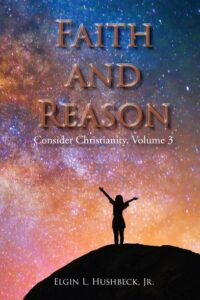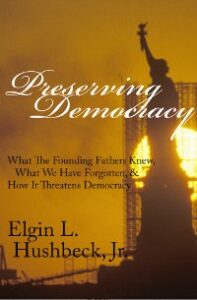History, the Confederacy, and Monuments
Recently on EDN, Robert Cornwall had an excellent article on the need to study history. On that point, I completely agree. That said, I thought the view of history in the article he recommended was a bit binary and one-sided. To be sure, there is a lot of truth in the description of Confederate monuments being linked to the “the Lost Cause.” When I was younger (i.e., the 1960s and 70s), it was still not all that uncommon to hear at least some of the older southerners refer to “the war of northern aggression.”
While there have been some attempts to remove the issue of slavery from the Civil War, instead, trying to find some sort of economic justification, ultimately those attempts have failed. Whatever other factors may have been involved, they were clearly secondary. If one could somehow erase the issue of slavery from the early history of the United States, there would have been no Civil War.
Granted, in the early part of the war, many in the North were focused mainly on preserving the Union. Any such pretext was removed with the Emancipation Proclamation. In the latter half of the war, both sides fought over slavery, the South to preserve it and the North to end it.
Slavery, the original sin of the country, ran deep, dividing it from its earliest days. It stained the Constitution, dragging it away from the goals of the Declaration of Independence, where “all men are created equal” into a 3/5 compromise. It repeatedly plagued the early years of the country like a cancer eating away at its victim. Periodically, it would bubble to the surface, resulting in yet more compromises.
While the Democratic Party was mostly pro-slavery, the Whig party was split between those who wanted to restrict or even end slavery and those who were willing to accommodate it or did not care. As the abolitionist movement grew, this split among the Whigs eventually destroyed the party, and out of its destruction emerged the clearly anti-slavery Republican Party. With the election of the first Republican President, Lincoln, the South, fearing what the anti-slavery Republicans would do, started the Civil War.
The war ended, but the stain remained. While Republicans moved more towards the idea of the Declaration, Democrats continued to view issues through the lens of race. As Republicans began to lose political control of the South, the Democrats began to impose another form of racism: Segregation, which sadly would last until the 100th anniversary of the Civil war. While there are some notable Democratic exceptions, as there were for Republicans as well, for the most part, the Democrats were the party of race, first supporting slavery, then of segregation. The KKK was the base of many Democratic politicians who were often members themselves.
I was recently asked by a young software developer how is it that this was turned on its head? I answered that in many respects, it hasn’t. Democrats still tend to see everything through the eyes of race. Republicans are still the party where the color of one’s skin just is not that important; what matters is what one does and believes.
For many Democrats, the focus on races and dividing people into groups is so strong that they have a hard time accepting that Republicans really do not care about skin pigmentation. Instead, they take the resistance to dividing people into groups as itself a form of racism. They then create myths such as the southern strategy to project their past evils unto their political opponents.
Yet a Republican can, as many did, oppose Obama and yet enthusiastically support Ben Carson because of their policies and positions, not their skin color. For Democrats, Republican opposition to Obama is frequently portrayed as racism. The explanations for Carson, when offered, range from the incoherent to the disgusting (i.e., portraying Carson as an Uncle Tom).
So, where do I come down on Confederate monuments? While my mother was from North Carolina, my Dad was from Wyoming. I grew up as an Air Force brat, an Air Force that had been desegregated by Harry Truman, a Democrat, seven years before I was born. Most of my memories as a child come from Pennsylvania and California. I now live in Wisconsin. So I am basically a northern Republican and do not view the Civil War as a lost cause or a war of Northern aggression. After all, the South started it by firing on Fort Sumter. I view the Civil War as two things: A Victory, and Over.
Something common among the military, but not always understood by civilians, is the way that true warriors can fight so hard during a war, but then see those on “the other side” as fellow warriors after the war is over, even getting together to commemorate those fallen in battle. Thus, I can read a book like Rod Gragg’s “Covered with Glory: the 26th North Carolina Infantry at the Battle of Gettysburg” and not be rooting for my side to win or the South to lose. Instead, I seek an understanding of what they went through and suffered.
Towards the end of the first day of fighting, a federal soldier, Corporal Charles H McConnell of the 24th Michigan was falling back. He took his last bullet, and aiming at a large man in gray 30 yards away, pulled the trigger. The large man was Colonel John R Lane, of the 26th North Carolina. The bullet hit Lane in the back of the neck, exiting out through his teeth. It was a horrendous wound that nearly killed him. Yet 40 years later, at the anniversary of the battle, Lane and McConnell met again and became friends. How is this possible?
Ultimately, it is because warriors realize, better than most, that in war, those on both sides are caught up in something larger than themselves. Once settled, it is time to move on and turn swords into plowshares. I can admire as tragic figures “those on the other side” like Lee and Stonewall Jackson. I can get a glimpse of the internal struggle that some faced as they came up against good friends in battle like Armistead and Harrison at Gettysburg. In short, I see them as people who suffered and not part of an issue to be fought over.
In this light, when it comes to monuments in cemeteries or places like Gettysburg, I would be very strongly opposed to their removal. As for the others, I see them as much more problematic. I do believe that some of these celebrate the military tradition of the South, something that is much stronger than it is in the North. It is a part of who they are or at least were. Note that what is often called the Confederate flag was not actually the flag of the Confederacy but a battle flag. Like it or not, it is their history. But I can also understand the difficulty in separating this from the reason for which the war was fought, the preservation of the evil of slavery.
The love of history in me would hate to see their blanket removal as something akin to how Islamic radicals seek to purge the areas they conquer of any vestige of the things they oppose. Ultimately, I wish those involved would learn to be more like Lane and McConnell. I wish we could look back on the Civil War as a tragedy that engulfed the nation, caused by our compromise with the evil of slavery.
Frankly, it should be much easier for us than it was for Lane and McConnell, after all, no one alive today actually fought in the Civil War. Maybe a solution is that, rather than remove the Civil War monuments, we should focus on the positive endeavor of building more monuments to those who fought so hard to end the legacy of segregation in the Civil Rights movement.

